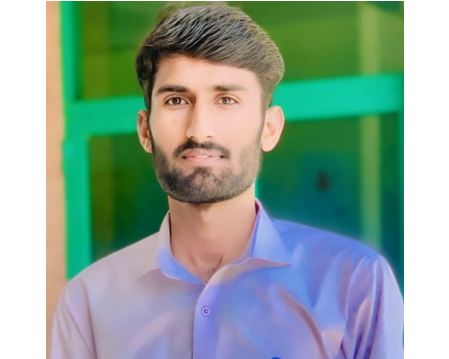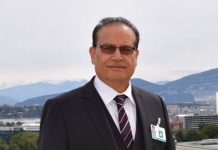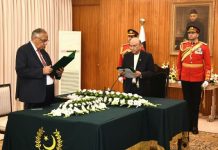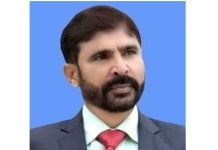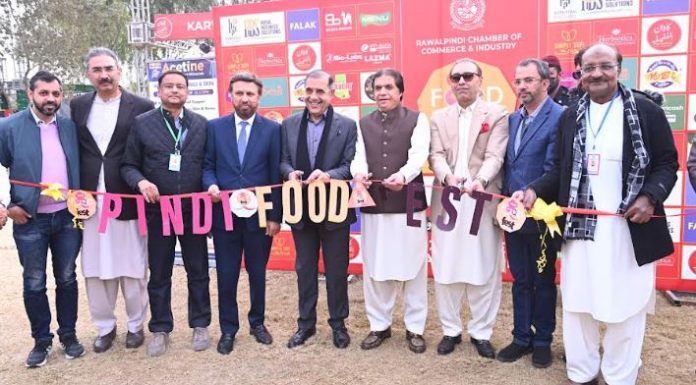Student of BS Medical Laboratory Technology University of Okara.
Hospital tours provide invaluable insights into medical laboratories, enhancing students’ practical knowledge beyond textbooks. A study tour for Department of Medical Laboratory Technology students at the University of Okara was conducted on January 28, 2025, under the supervision of Dr. Saira Sattar.They were accompanied by Ms.Amina Aqeel and Mr.Naeem Akhtar. Despite facing several challenges, the organizers, with the support of some students, successfully arranged the tour. The visit included Sahiwal Teaching Hospital and Sahiwal Medical College, offering exposure to microbiology, histopathology, hematology, and serology labs. Students observed diagnostic procedures, blood banking, and laboratory techniques firsthand. Experts guided them through specimen collection, bacterial culture, and medical diagnostics.Hands-on experience with laboratory equipment deepened their understanding of quality control and clinical practices. The visit highlighted career opportunities in academia, research, and clinical diagnostics. Interactions with professionals emphasized the critical role of laboratory technologists in healthcare. The experience reinforced their confidence and professional aspirations. This initiative bridged academic learning with real-world medical applications, preparing students for impactful careers in medical sciences. The first visit was to the laboratory of Sahiwal Teaching Hospital, where students had the opportunity to explore various sections under the guidance of Dr. Ahmad and Dr. Hina. The visit began with an introduction to the laboratory, highlighting its role in medical diagnostics.Students were introduced to different sections, including Hematology, Serology, Routine Chemistry, and Microbiology.
Dr. Ahmad and Dr. Hina explained the significance of each segment in disease diagnosis and patient management. The process of sample collection was demonstrated, emphasizing the correct techniques for drawing blood and other specimens. Students learned about the importance of maintaining hygiene and safety protocols while handling samples. The proper method of labeling samples was explained to ensure accuracy and prevent errors. They were introduced to the laboratory’s automated and manual equipment used for different diagnostic tests. In the Hematology section, students observed how blood samples are analyzed to detect various disorders. The working principles of hematology analyzers were discussed in detail. In the Serology section, they learned about diagnostic tests used to detect infectious diseases. The significance of antigen-antibody reactions in disease detection was explained. In the Routine Chemistry section, students were shown how biochemical tests are performed to assess organ function. They observed tests for liver function, kidney function, and blood glucose levels. The principles behind spectrophotometry and other biochemical techniques were demonstrated. In the Microbiology section, students learned about bacterial culture techniques. They were shown how different culture media are used to grow and identify microorganisms. The process of staining and microscopic examination of bacteria was demonstrated. The importance of antibiotic sensitivity testing in treatment decisions was explained. Throughout the visit, Dr. Ahmad and Dr. Hina answered students’ queries, enhancing their understanding. Students were given hands-on experience in handling laboratory instruments. They observed how laboratory professionals follow standard operating procedures to ensure accuracy. The role of quality control in maintaining reliable test results was emphasized. The final stage of laboratory diagnostics, which involves generating patient reports, was demonstrated. Students learned how test results are interpreted and documented. The significance of maintaining confidentiality and ethical considerations in laboratory work was discussed.The instructors conducted practical demonstrations to reinforce theoretical knowledge. This hands-on experience helped students gain a deeper understanding of laboratory techniques. The visit provided valuable exposure to real-world diagnostic procedures. It enhanced students’ confidence in performing laboratory tasks accurately.Overall, the visit to the laboratory was an informative and enriching experience, preparing students for future professional challenges.
After that, the students visited the Blood Bank at Sahiwal Teaching Hospital, where they observed various instruments used in blood banking procedures. They gained practical knowledge of the cross-matching process, which ensures compatibility between donor and recipient blood. The students also learned about the collection and processing of fresh frozen plasma (FFP) and its significance in medical treatments. Additionally, they observed the separation of different blood components, such as red blood cells, platelets, and plasma, each stored under specific conditions to maintain their viability. The visit provided hands-on exposure to the technical aspects of blood banking, enhancing their understanding of transfusion medicine. They also learned about the strict protocols followed to ensure blood safety and prevent contamination. The role of advanced equipment in inaccurate blood testing and storage was emphasized during the session. Students observed how blood samples are handled, labeled, and stored to maintain traceability. The visit reinforced the importance of proper blood component storage to ensure effective patient treatment. Overall, the experience deepened their knowledge of laboratory practices and the critical role of blood banks in healthcare. After visiting Sahiwal Teaching Hospital, the students were taken to Sahiwal Medical College. Upon arriving at the medical college, the teachers and students were warmly welcomed by the histopathologists and microbiologists. The faculty members introduced themselves and briefly explained their respective fields. They provided insights into the role of histopathology and microbiology in medical diagnosis and research. The students were given a tour of the laboratories, where they observed various diagnostic techniques and procedures. The doctors explained how different diseases are identified through microscopic examination and laboratory tests. They also discussed the importance of research in improving medical treatments and patient care. The students had the opportunity to ask questions and interact with the experts. The visit aimed to enhance their understanding of medical sciences and inspire them for future careers in healthcare. It was an informative and engaging experience for both students and teachers. After welcoming the teachers and students, they were first divided into groups and taken for a visit to the microbiology laboratory. There, Dr. Syeda Wajiha Batool Microbiologists provided a detailed explanation of how microorganisms are cultivated and how their growth is observed on Petri dishes. He introduced the students to various instruments used in the laboratory, including the laminar airflow, hot oven, and incubator, explaining the function and importance of each in microbiological research. The students were shown how culture media is prepared and the methods used to identify microbial growth. Dr. Syeda Wajiha Batool Microbiologists also explained the different types of agars used in the laboratory and their specific applications for cultivating various microorganisms. Additionally, she demonstrated how sensitivity tests are conducted to determine the effectiveness of antibiotics on microbes, and how microbial resistance is assessed, an important factor in understanding the behavior of pathogens. She emphasized the role of medical laboratory professionals in these processes, highlighting their crucial involvement in ensuring accurate testing, diagnosis, and treatment strategies. Through this visit, the students gained practical insights into the everyday functions of a microbiology laboratory, understanding the methods and techniques used to study microorganisms, and the essential role laboratory professionals play in advancing medical science. This experience provided a solid foundation for the students, complementing their theoretical knowledge with real-world laboratory practices. The microbiology laboratory students were taken on a visit to the histopathology laboratory, where they had the opportunity to observe and learn about various processes. In the grossing room, students were shown different organs and provided with detailed information on how tissues and organs are preserved. Practical demonstrations were conducted to explain these processes. The students were also introduced to the techniques of tissue processing and embedding. The process of cutting tissues using a microtome was demonstrated, along with the methods of staining slides. They were informed about the different types of stains used in histopathology, and the practical application of these techniques was shown to them.
The students gained hands-on experience during the visit, which significantly enhanced their understanding of the subject. The histopathologist also explained the vital role played by medical laboratory professionals in a histopathology laboratory. Furthermore, the students were briefed on the prospects in the field and the various roles they could pursue as professionals in histopathology. This visit provided them with a comprehensive view of the operations within a histopathology laboratory and offered valuable insight into the potential career paths they could follow. Overall, the visit was a highly informative and enriching experience for the students. After visiting the histopathology laboratory, Dr. Raess, a histopathologist, and Dr. Syeda Wajiha Batool from microbiology at Sahiwal Medical College took photos with students and teachers. They engaged in a discussion about the future of students and highlighted the significant role of medical laboratory professionals. They also shared their insights on the growing opportunities in the field. The students and teachers were given a comprehensive tour of the laboratories at Sahiwal Teaching Hospital, Sahiwal Laboratory, and Sahiwal Medical College. This tour provided the students with valuable exposure and a great learning experience. The visit allowed students to see firsthand the practical applications of their academic knowledge and how laboratory work contributes to patient care. As the visit came to an end, Dr. Raess and Dr. Syeda Wajiha Batool bid farewell to the group, wishing them the best in their future careers. The entire experience served as an excellent opportunity for students to interact with professionals in the field and gain insights into the importance of laboratory work in the medical profession. The students completed the tour with valuable insights that went beyond academic learning. They developed a deep understanding of their future roles as professional laboratory technologists and recognized their potential to make a meaningful impact in healthcare. The experience boosted their confidence, reinforcing the importance of their contributions, which are just as significant as those of MBBS students. The hospital tours undertaken by the students of the Department of Medical Laboratory Technology at the University of Okara were more than just a physical exploration—they were a profound learning experience. As they return to their classrooms, these students bring not only theoretical knowledge but also a deeper appreciation of their future role in patient care and community health. Inspired and committed to lifelong learning, they are prepared to excel in their chosen field, knowing that their contributions play a vital role in the broader healthcare system.
Student of BS Medical Laboratory Technology
University of Okara.
